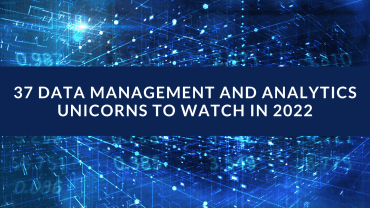
A quick overview of ten Python libraries that can assist you in optimizing your workflow, improving your models, and maximizing your data.
As someone deeply involved in the world of machine learning and data science, I know firsthand how overwhelming it can be to choose the right tools for the job. The Python ecosystem is vast, with countless libraries and frameworks available for everything from data preprocessing to model deployment. How do you decide which libraries are worth your time?
In 2024, Python continues to dominate the data science and machine learning landscape. According to recent statistics, over 70% of data scientists and machine learning practitioners use Python as their primary programming language. But with options, it’s easy to feel lost.
The good news? I’ve been there, and I’ve spent years refining my toolkit. In this blog, I’ll guide you through the ten essential Python libraries that have proven invaluable in my own work. These libraries can assist you in optimizing your workflow, improving your models, and maximizing your data. Let’s dive in.
1. NumPy
NumPy is the foundation of many other libraries in Python. It’s the first library you should get comfortable with when diving into data science and machine learning. NumPy allows you to perform fast and efficient computations on arrays and matrices. It’s especially handy for managing extensive sets of data.
Why it’s essential: Imagine you’re working on a dataset with millions of rows. Using regular Python lists would be slow and inefficient. NumPy’s array operations are optimized for performance, making it possible to perform complex calculations in seconds rather than minutes.
Personal Experience: I’ve often found myself working on projects where speed was crucial. In one case, I was dealing with a massive dataset of customer transactions. Using NumPy, I was able to preprocess the data in a fraction of the time it would have taken with standard Python lists. This allowed me to focus more on model building and less on data wrangling.
2. Pandas
Pandas is another cornerstone of data science in Python. It’s designed for data manipulation and analysis, making it incredibly easy to load, clean, and prepare your data for machine learning models. With its intuitive DataFrame structure, Pandas simplifies tasks like merging datasets, filling missing values, and filtering data.
Why it’s essential: Let’s say you’re analyzing customer data and need to filter out specific segments based on various criteria. Pandas makes this process almost effortless, allowing you to work with data in a way that feels natural and intuitive.
In my experience: In one of my projects, I had to merge multiple datasets from different sources. The data was messy, with missing values and inconsistent formats. Pandas came to the rescue. I could clean and combine the data seamlessly, setting the stage for accurate and reliable machine learning models.
3. Matplotlib
Data visualization is a critical step in the data science process. The primary library for producing static, animated, and interactive visualizations in Python is Matplotlib. Whether you’re plotting a simple line chart or creating a complex heatmap, Matplotlib has you covered.
Why it’s essential: Visualizing data helps you understand it better. For instance, if you’re exploring the relationship between different features in your dataset, a scatter plot can reveal patterns that might not be obvious from the raw numbers.
My expertise: Early in my career, I underestimated the power of data visualization. But once I started using Matplotlib, I realized how much easier it was to communicate my findings. During a project analyzing stock market data, I used Matplotlib to create a series of visualizations that highlighted key trends and outliers. This not only improved my own understanding but also helped me present my findings more effectively to stakeholders.
4. Seaborn
Seaborn is constructed using Matplotlib as its foundation and offers a sophisticated interface for producing appealing and enlightening statistical visualizations. It’s particularly useful for visualizing complex relationships between variables.
Why it’s essential: When you need more advanced visualizations like violin plots or pair plots, Seaborn offers a level of sophistication that goes beyond basic charts. It’s perfect for exploratory data analysis.
My hands-on experience: In a recent project, I was working on a dataset with multiple categorical variables. Seaborn’s pair plots and heatmaps made it easy to explore the correlations between these variables. The visualizations were not only beautiful but also packed with information that guided the rest of my analysis.
5. Scikit-Learn
Scikit-Learn is a must-have for anyone working in machine learning. It provides straightforward and effective tools for mining and analyzing data. With Scikit-Learn, you can easily implement a wide range of machine learning algorithms, from linear regression to clustering and beyond.
Why it’s essential: Imagine you’ve cleaned your data and are ready to build a predictive model. Scikit-Learn allows you to do this with just a few lines of code, making it accessible even for those new to machine learning.
My involvement: I’ve used Scikit-Learn in nearly every machine learning project I’ve worked on. One of my favorite features is its ability to split data into training and test sets with ease. This has saved me countless hours and helped ensure that my models were both accurate and generalizable.
6. TensorFlow
TensorFlow, developed by Google, is a powerful library for building and deploying machine learning models, particularly deep learning models. It supports both CPU and GPU computing, making it possible to train large models in a reasonable time frame.
Why it’s essential: Deep learning is at the forefront of AI research, and TensorFlow is the tool that can help you harness its power. Whether you’re building a neural network for image recognition or natural language processing, TensorFlow provides the flexibility and scalability you need.
What I Learnt: I remember the first time I used TensorFlow to build a convolutional neural network for image classification. The model was able to classify images with high accuracy, and the experience opened the door to more advanced AI projects.
7. Keras
Keras is an open-source neural network library written in Python, designed to simplify building deep learning models. It acts as an interface for the TensorFlow library, providing a more user-friendly way to construct and train neural networks.
Why it’s essential: If you’re new to deep learning, Keras is the perfect entry point. It allows you to build and train models with just a few lines of code without getting bogged down in the complexities of TensorFlow.
My familiarity: When I first started experimenting with deep learning, I found TensorFlow to be overwhelming. Keras made the process much more approachable. I was able to build and train a simple neural network in no time, which gave me the confidence to tackle more complex projects later on.
8. XGBoost
XGBoost is a highly efficient, flexible, and portable optimized distributed gradient boosting library. It’s one of the most popular tools for building machine learning models, particularly for structured data.
Why it’s essential: Gradient boosting is a powerful technique for building predictive models. XGBoost takes this technique to the next level, offering speed and performance that’s hard to beat.
My skillset: In a Kaggle competition, I used XGBoost to build a model that ranked in the top 10%. The library’s speed and accuracy were instrumental in fine-tuning the model and achieving a competitive score. Its ability to handle missing data and categorical variables with ease was a game-changer.
See also: Why Golang and Not Python? Which Language is Perfect for AI?
9. NLTK
The Natural Language Toolkit (NLTK) is a leading library for working with human language data (text). It offers user-friendly interfaces for more than 50 corpora and lexical resources, in addition to a set of text-processing libraries.
Why it’s essential: If you’re working on natural language processing (NLP) tasks like sentiment analysis, tokenization, or part-of-speech tagging, NLTK is your go-to tool.
My insight: During a project where I had to analyze customer reviews, NLTK was indispensable. It allowed me to quickly tokenize and process the text data, making it easier to build a sentiment analysis model. The insights gained from this analysis were crucial in refining the product offering based on customer feedback.
10. PyTorch
Another deep learning framework that has become very popular is PyTorch, which was created by Facebook’s AI Research lab. It’s known for its flexibility, ease of use, and dynamic computation graph, which allows for more intuitive model building.
Why it’s essential: PyTorch is particularly favored in the research community for its simplicity and the ease with which it allows you to build and experiment with neural networks.
My journey: I switched to PyTorch for a project involving reinforcement learning and found it to be incredibly intuitive. The dynamic computation graph made debugging much easier, and the community support was outstanding.
Empower Your Workflow
Choosing the right tools can make all the difference in your machine learning and data science projects. The libraries I’ve highlighted here are not just popular—they’re essential. Each one plays a unique role in the data science pipeline, from data manipulation and visualization to model building and deployment.
If you’re just starting out, I recommend taking the time to explore each of these libraries. Start with the basics like NumPy and Pandas, then gradually move on to more advanced tools like TensorFlow and PyTorch. The learning curve might be steep, but the payoff is worth it. You’ll find that these tools empower you to tackle complex problems with confidence.
Remember, the key to success in data science is not just knowing which libraries to use but understanding how to use them effectively. So dive in, experiment, and most importantly, keep learning. The world of machine learning and data science is constantly evolving, and staying up-to-date with the latest tools and techniques is the best way to stay ahead of the curve.
And don’t forget to share your experiences. The Python community is one of the most supportive out there, and contributing your insights can help others on their journey as well.





























